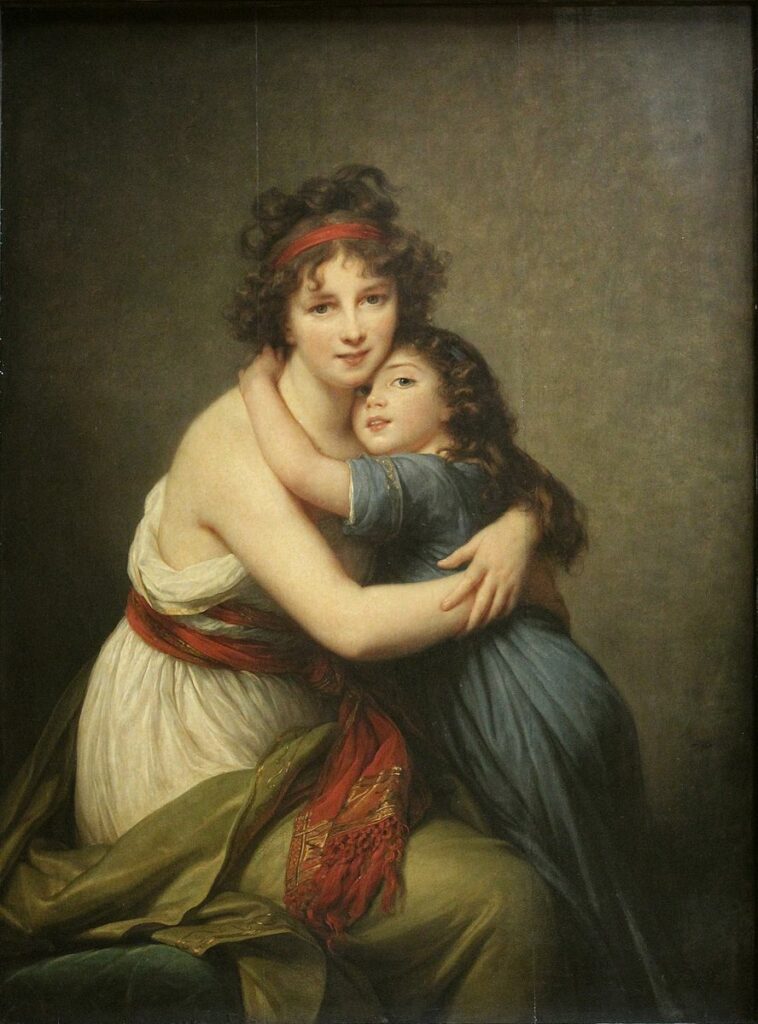
I learned about Élisabeth Louise Vigée Le Brun when I was studying art history in university. She was one of the few women painters during the 1700s who learned to as a young girl paint from watching her father. Women were not able to study painting as easily as men and she suffered many set backs because of her gender.
Vigée Le Brun is known for painting portraits which some people found controversial. The women in her portraits looked straight at the viewer, just like men, instead of looking away in a demure manner. Most famously is her portrait of Marie Anntoniette wearing a white muslin dress which was shocking because wealthy members of high class royalty were usually depicted in regal dress. The painter loved to wear white muslin dresses and may have influenced the queen to dress up in the classical period style dress.
In my favorite Vigée Le Brun self portrait, she is wearing a classical white muslin dress and hugging her daughter. The rich colors in this painting are so inviting. The skill in painting textures are seen in the hair and skin as well as the rendering of fabrics such as the cotton muslin dress, the velvet pillow, the silk satin and embroidered wool. Although this seems like a mundane scene, notice that her daughter is not in a costume but in modern dress for the time. Both the mother and daughter look straight at the viewer as they embrace. It is a warm and welcoming scene of her daily life. Perhaps she wanted to convey her dual professions of artist and mother. But this was not an ordinary day with a mother and daughter. Vigée Le Brun lived a very modern life compared to most women of her time and her daughter was able to embrace a life of adventure along with her mother.
-Karen Bravo
Junior Girl
Girl Museum Inc
